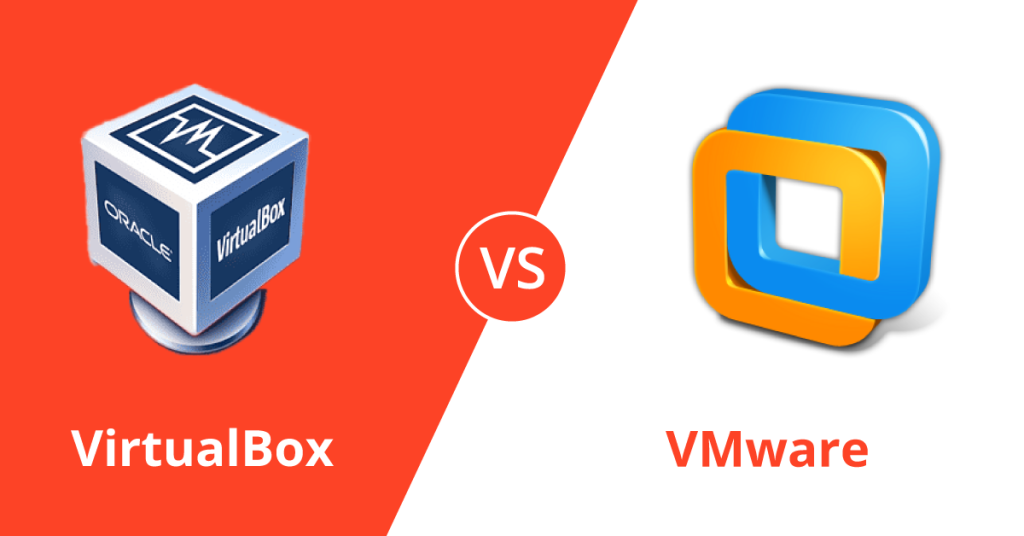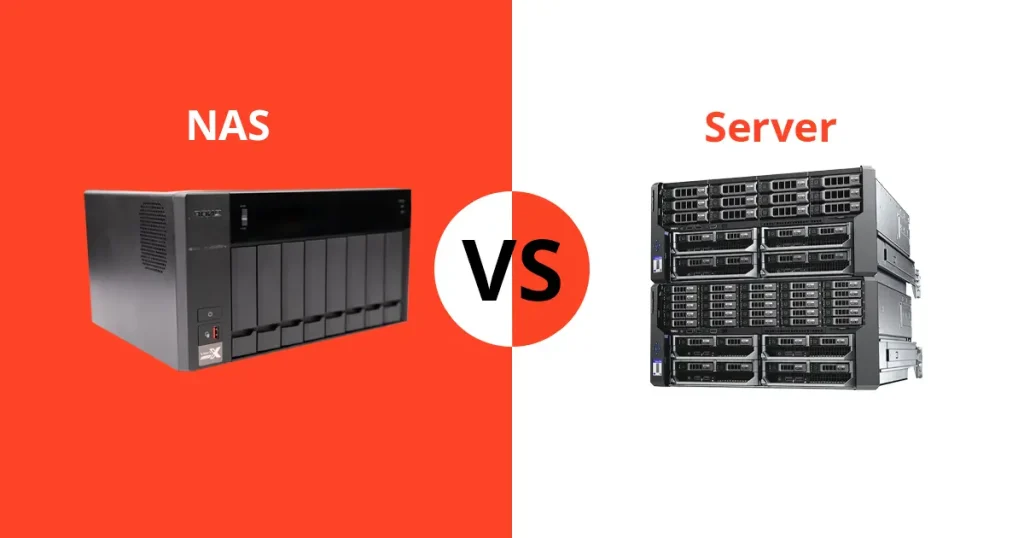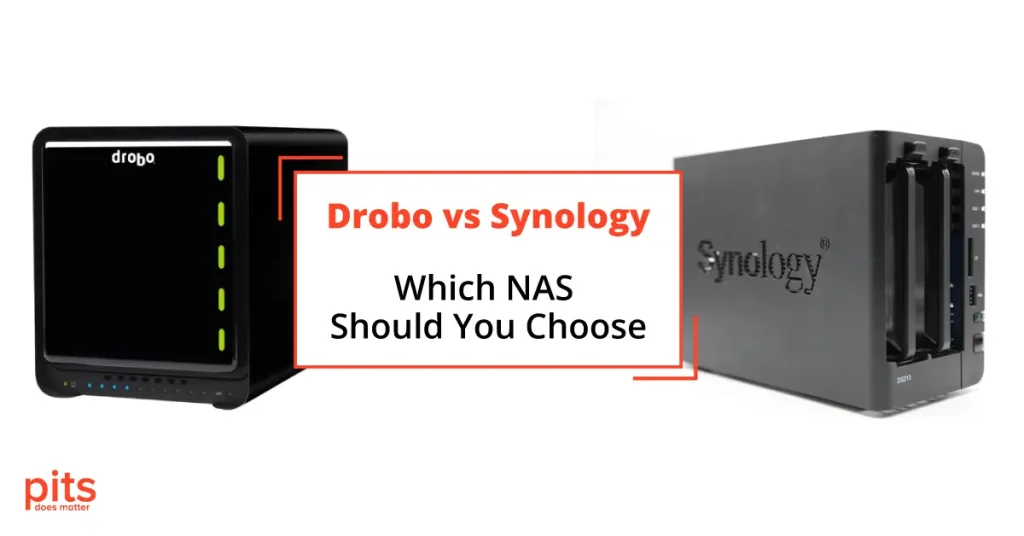In the realm of data storage, ensuring data integrity and availability hinges upon the fundamental principles of redundancy and fault tolerance. This is where RAID (Redundant Array of Independent Disks) steps in. RAID is a technology that amalgamates multiple physical disks into a cohesive logical unit, bolstering performance, data redundancy, and fault tolerance. Among the array of RAID levels available, RAID 1 and RAID 5 stand out as popular choices. In this article, we shall delve into the intricacies of RAID 1 and RAID 5, examining their operational mechanics, enumerating their advantages, and ultimately contrasting these two RAID levels.
RAID Levels: A Synopsis
Before delving into the nuances of RAID 1 and RAID 5, it is imperative to grasp the concept of RAID levels. RAID technology encompasses a spectrum of levels, each presenting a distinct approach to data striping, redundancy, and performance enhancement. Spanning from RAID 0 to RAID 6, these levels furnish administrators with a breadth of options to cater to their specific storage requisites.
RAID 1: Data Safeguarding Through Mirroring
RAID 1, commonly referred to as disk mirroring, represents the most straightforward RAID configuration. It entails the replication of data across several physical disks, generating precise copies on each disk within the array. Within a RAID 1 setup, data is simultaneously written to all disks, guaranteeing identical copies on each one. This redundancy bestows a robust fault-tolerant mechanism, as even in the event of one disk’s failure, the other retains all necessary data.
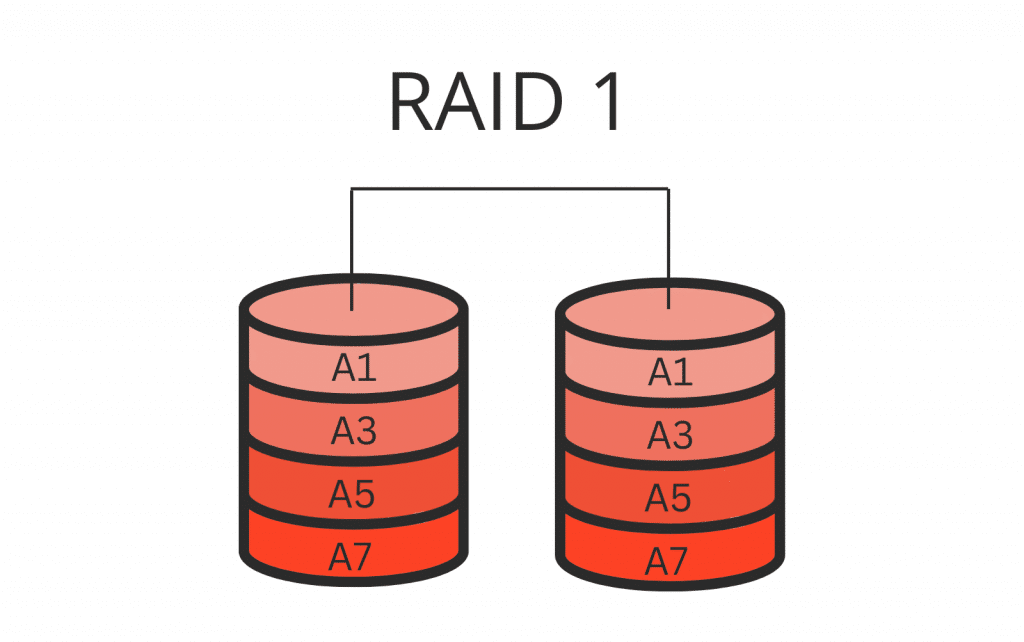
RAID 1’s advantages predominantly revolve around data redundancy and enhanced read performance. Given that data is written to multiple disks concurrently, reading operations can occur in parallel, resulting in expedited access times. Moreover, in case of a drive failure, data remains accessible from the remaining disk, ensuring uninterrupted operation and mitigating the risk of data loss.
RAID 5: Enhanced Redundancy with Distributed Parity
In contrast to RAID 1, RAID 5 employs block-level striping complemented by distributed parity to achieve a balance between redundancy and performance enhancement. Within a RAID 5 array, data and parity data are distributed across multiple disks, offering improved fault tolerance while preserving storage capacity.
RAID 5 writes data across all disks in the array, creating and storing parity information on each disk. This parity data serves as a checksum, facilitating data reconstruction in the event of a disk failure.
The distribution of parity empowers the array to remain operational even when one disk fails.
RAID 5’s primary advantages are rooted in its fault tolerance and storage efficiency. Through the dispersion of parity data across multiple disks, RAID 5 can withstand the failure of a single disk without data loss. This characteristic makes it an appealing choice for environments where both data security and storage capacity are paramount.
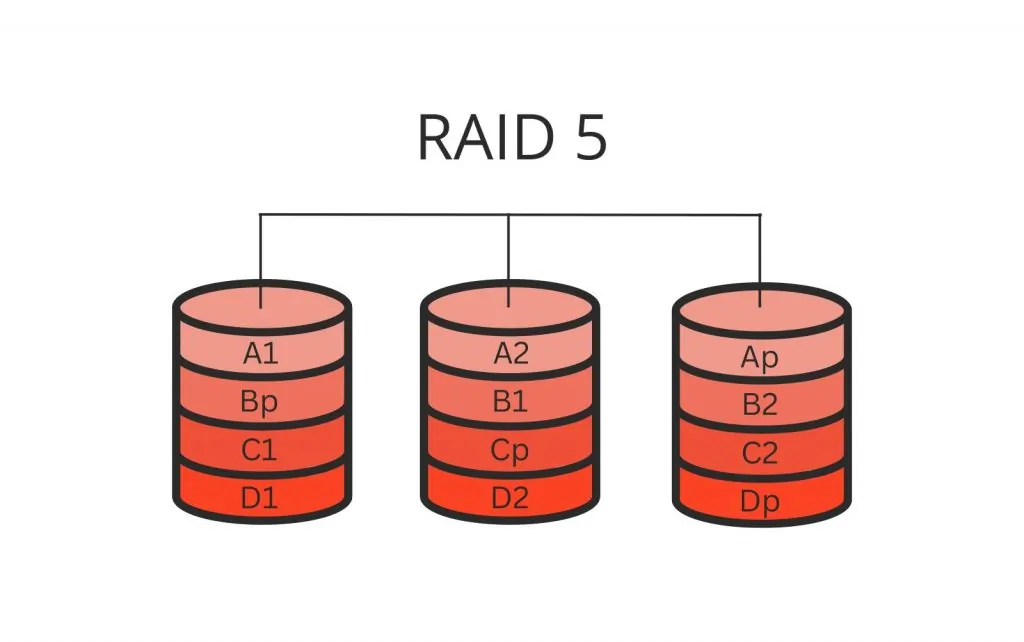
RAID 1 vs. RAID 5: A Comprehensive Comparison
Now that we possess a sound understanding of RAID 1 and RAID 5 let’s scrutinize these two RAID levels across various facets:
Data Redundancy: Both RAID 1 and RAID 5 provide data redundancy through multiple disk storage. RAID 1 employs disk mirroring, while RAID 5 utilizes distributed parity.
Fault Tolerance: RAID 1 offers superior fault tolerance in comparison to RAID 5. In RAID 1, a single disk failure doesn’t lead to data loss or downtime due to the presence of an exact mirrored copy. Conversely, RAID 5 can withstand a single disk failure but becomes susceptible to data loss and reduced performance if multiple disks fail concurrently.
Storage Capacity: RAID 5 boasts an advantage in terms of storage capacity utilization, offering more usable storage space compared to RAID 1 due to its use of parity information rather than mirroring.
Write Performance: Typically, RAID 1 surpasses RAID 5 in write performance. The simultaneous writing of data to multiple disks in RAID 1 results in faster write operations. Conversely, RAID 5 entails additional overhead for calculating and writing parity information, leading to slower write speeds.
Data Recovery: Both RAID 1 and RAID 5 support data recovery in the event of disk failure. However, RAID 1 offers a simpler and faster recovery process involving data copying from the mirrored disk. RAID 5, on the other hand, requires more intricate calculations to reconstruct data using parity information, potentially extending the recovery duration.
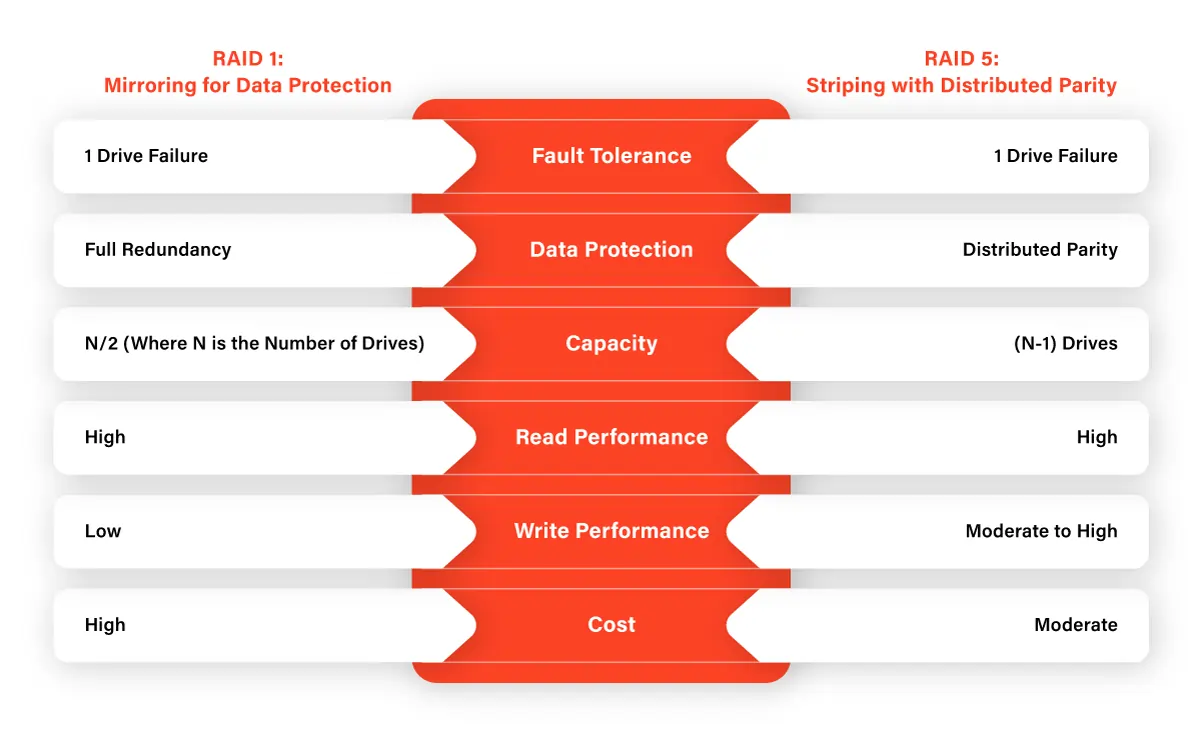
In summary, RAID 1 and RAID 5 are both well-recognized RAID configurations, each offering distinct advantages and trade-offs in terms of data redundancy, fault tolerance, storage capacity, and performance. RAID 1 stands out for its simplicity, robust fault tolerance, and enhanced read performance, catering to environments where data integrity and swift access are paramount. Conversely, RAID 5 strikes a balance between redundancy, storage efficiency, and fault tolerance, making it a favoured choice for situations necessitating a compromise between data protection and storage capacity.
When making the choice between RAID 1 and RAID 5, careful consideration of factors such as data nature, performance demands, and available budget is crucial. A comprehensive understanding of the strengths and weaknesses inherent to each RAID level empowers administrators to make judicious decisions tailored to their specific storage requirements, ensuring data availability and integrity.
Frequently Asked Questions
What distinguishes RAID 1 from RAID 5?
The primary distinction lies in their data storage and protection methods. RAID 1 employs disk mirroring, creating exact copies of data on multiple disks, whereas RAID 5 utilises distributed parity to ensure fault tolerance and data redundancy.
Which RAID level provides superior fault tolerance?
RAID 1 offers greater fault tolerance in comparison to RAID 5. A single disk failure in RAID 1 does not lead to data loss or downtime due to the presence of a mirrored copy. RAID 5 can withstand a single disk failure but risks data loss if multiple disks fail concurrently.
Which RAID level maximises storage capacity utilisation?
RAID 5 offers superior storage capacity utilisation than RAID 1. By using distributed parity, RAID 5 can allocate more usable storage space, albeit sacrificing a portion for parity information. RAID 1, conversely, necessitates equal disk space for mirroring, resulting in reduced usable capacity.
Which RAID level delivers superior write performance?
Generally, RAID 1 outperforms RAID 5 in write performance. RAID 1 simultaneously writes data to multiple disks, facilitating quicker write operations. RAID 5 entails additional overhead for parity calculation and writing, potentially leading to slower write speeds.
